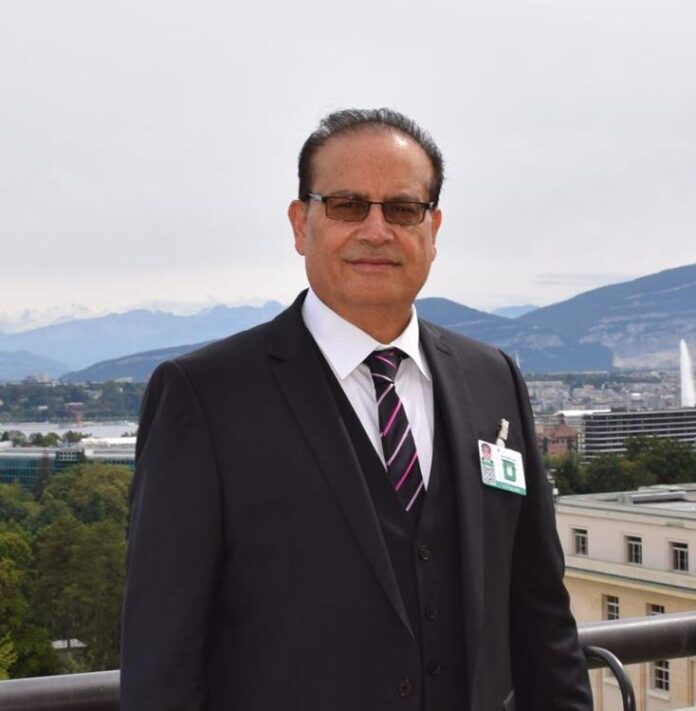Qamar Bashir
Iran has fallen into a strategic trap for the second time, and only with capabilities comparable to Israel’s military strength and allies as powerful as the USA and the West would Iran have any realistic fighting chance to safeguard its economic, industrial, and military assets.
The formidable offensive and defensive military capabilities of Israel, the United States, and their allies collectively represent the most advanced military force in the world, equipped with cutting-edge technology and an extensive range of assets.
The US leads with an extensive nuclear arsenal, a powerful air force equipped with F-22s, F-35s, long-range bombers, advanced missile systems like Tomahawk cruise missiles, and a dominant naval fleet with 11 aircraft carriers. Its capabilities are complemented by sophisticated cyber warfare and elite special forces such as Navy SEALs.
Israel adds significant strength with its highly advanced air force, Jericho ballistic missiles, and leading drone technology, backed by elite units like Sayeret Matkal. Defensively, Israel’s multi-layered missile defense systems, including Iron Dome, David’s Sling, and the Arrow series, provide comprehensive protection against various missile threats.
NATO allies and key partners like Japan, South Korea, and Gulf States contribute advanced aircraft, naval assets, ground forces, integrated air defense, and cyber defense, ensuring interoperability and global reach. This coalition’s technological superiority, combined nuclear deterrence, and seamless joint operational capabilities across land, sea, air, cyber, and space domains create a formidable force, capable of addressing any threat and projecting power worldwide.
Iran and its allies possess a formidable combination of offensive and defensive capabilities, relying on a mix of conventional and asymmetric warfare strategies to exert regional influence. Iran itself has a vast ballistic missile arsenal, including the Shahab and Fateh-110 series, long-range cruise missiles like the Soumar, advanced drones such as the Shahed-129, and significant naval power capable of swarming tactics in the Strait of Hormuz.
Defensively, Iran has developed air defense systems like the Bavar-373 and maintains underground facilities for missile storage. Its allies, including Hezbollah in Lebanon, the Houthis in Yemen, and various Shiite militias in Iraq and Syria, significantly amplify Iran’s reach and strength. Hezbollah has an extensive rocket and missile stockpile, while the Houthis have demonstrated the ability to strike deep into Saudi Arabia and the UAE.
These groups, alongside Iranian-backed forces in Syria, enhance Iran’s capacity for proxy warfare. This network enables Iran to conduct operations across multiple theaters, with a strong emphasis on asymmetric tactics, guerrilla warfare, cyber attacks, and missile strikes, making it a significant regional power despite facing technologically superior adversaries.
If Iran faces a combined and coordinated attack by Israel, the US, and their allies, it would face severe challenges in safeguarding its military, economic, and human assets. The overwhelming firepower would target Iran’s missile sites, command centers, and critical infrastructure, but Iran’s extensive underground facilities, advanced air defenses, and asymmetric warfare tactics, including proxy forces like Hezbollah and the Houthis, would allow it to maintain some retaliatory capability.
Economically, Iran would struggle as oil infrastructure and exports face disruption, but its experience with sanctions, black market operations, and self-reliance in key sectors would help it endure to some extent.
Civilian infrastructure would be heavily impacted, but Iran’s civil defense measures and nationalistic mobilization could sustain public morale. Iran’s cyber warfare capabilities and proxy forces would likely launch retaliatory strikes, imposing costs on its adversaries. Although Iran would suffer significant losses, its asymmetric strategies, resilience, and capacity for retaliation would make a prolonged conflict costly for its opponents, deterring a swift resolution.
The US, Israel, and their allies possess overwhelming war sustainability capabilities, given their advanced military technology, vast economic resources, superior logistics, and access to global supply chains.
The US leads with unparalleled firepower, precision weaponry, and a massive defense budget, while Israel has a highly advanced military and robust missile defense systems. These strengths are supported by the financial power and military assets of NATO and Gulf allies, making them capable of sustaining a prolonged conflict.
In contrast, Iran’s war sustainability relies on asymmetric warfare, underground facilities, and a large but less technologically advanced military.
Its resilience is rooted in decades of sanctions, proxy warfare, and nationalistic mobilization, allowing it to endure initial attacks and impose costs on its adversaries.
However, Iran’s limited access to advanced weaponry, economic vulnerabilities, and dependence on black-market operations would eventually strain its ability to sustain a prolonged high-intensity conflict. While the US and its allies have the clear advantage in a long-term war, Iran’s ability to prolong the conflict through guerrilla tactics and proxy forces could make it costly and challenging, potentially deterring a drawn-out engagement.
A war between Iran and a US-Israel-led coalition would have severe and destabilizing effects on Pakistan, impacting its security, economy, humanitarian situation, and diplomatic relations. The conflict would likely escalate border tensions, risk spillover violence, and inflame sectarian tensions within Pakistan due to its significant Shia population.
Economically, soaring energy prices from disrupted Gulf oil supplies and trade disruptions, especially affecting the China-Pakistan Economic Corridor (CPEC), would exacerbate Pakistan’s financial challenges, leading to inflation and power shortages.
A potential influx of Iranian refugees would strain Pakistan’s already limited resources, while navigating diplomatic pressures to take sides would complicate its relations with Iran, the US, Saudi Arabia, and China. The war would force Pakistan to balance its foreign policy in a volatile regional environment, with the potential to disrupt its internal stability, economic growth, and regional alliances.
To prevent an imminent and devastating war between Iran and a US-Israel-led coalition, international bodies like the UN, OIC, and others must take coordinated and proactive measures. The UN should urgently facilitate direct dialogue, appoint a special envoy, and pass resolutions calling for restraint, while offering phased sanctions relief in exchange for Iran’s adherence to peace efforts.
The OIC should leverage Islamic solidarity to mediate between Iran and its neighbors, deploy fact-finding missions, and initiate a regional security dialogue to address broader issues.
Other organizations like the EU and Arab League should engage in multilateral diplomacy, prepare humanitarian assistance, and promote arms control agreements to prevent escalation. By working together, these international bodies can use diplomacy, mediation, and incentives to steer all parties towards peaceful resolution and mitigate the risk of a full-scale conflict.
Qamar Bashir
Former Press Secretary to the President
Former Press Minister to the Embassy of Pakistan to France
Former MD, SRBC, CEO, ATV

















